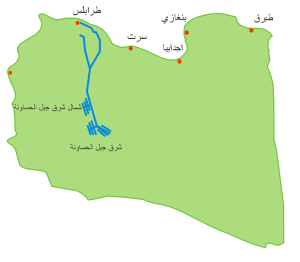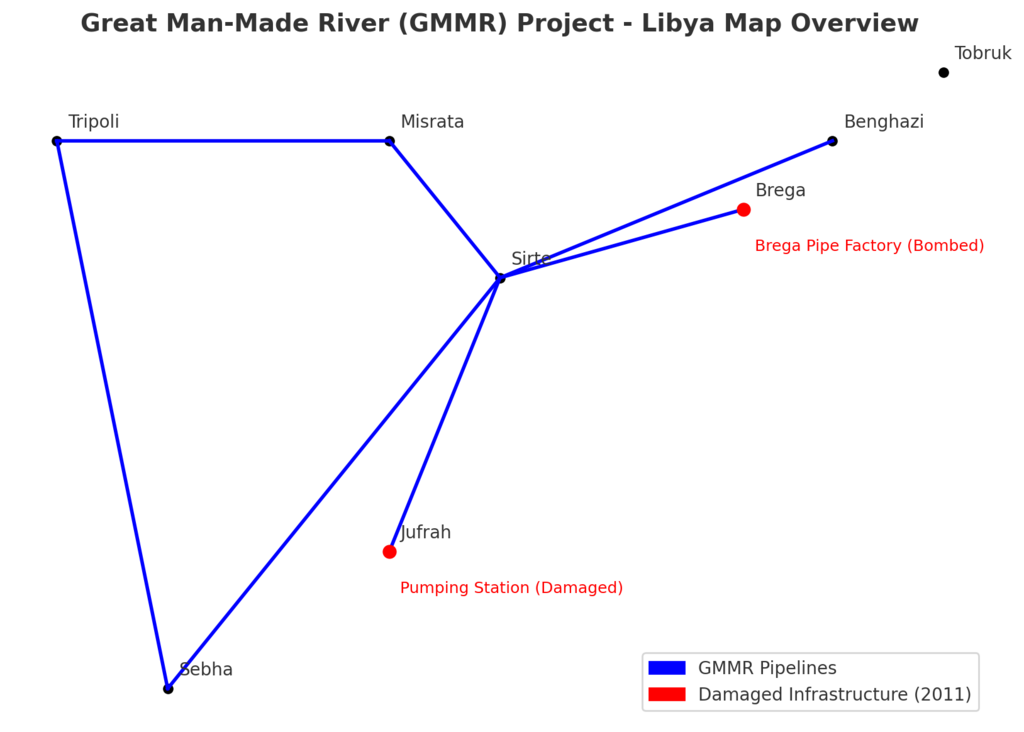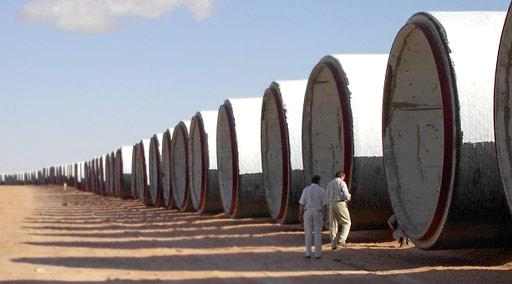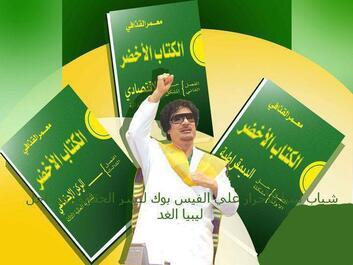
Great Man Made River Project

Welcome to the official page dedicated to one of the greatest civil engineering achievements of the modern era — The Great Man-Made River (GMMR).
Born from the vision of Muammar Al Gaddafi, the GMMR was designed to unlock Libya’s ancient underground water reserves and bring fresh, clean water from deep beneath the Sahara to the coastal cities, farmlands, and communities of Libya. This monumental project has been described by engineers, environmentalists, and world leaders alike as "the largest irrigation project in the world."
With over 1,600 wells, stretching more than 4,000 kilometers of buried pipelines, the GMMR became a symbol of self-reliance, sovereignty, and sustainable development — built without loans or Western corporate control.
This website explores the history, science, and legacy of this visionary project — a lifeline that still serves millions today, despite years of conflict and sabotage.
In the ninth month of the year (1984) began work on a Great Man Made River to transport groundwater basins infidels and bed and Tazrbu and Fezzan in the south to the cities of Benghazi and Sirte and Tripoli, Tobruk and other coastal cities in the north through the system, huge pipes huge total extension of about (3.380 ) kilometers was set up two plants in the bed and Brega for the provision of these tubes made of material concrete the previous stress and is buried in the trenches of the underground at a depth of (7) meters have been drilled (960) wells at depths ranging from (450) meters, and between (650) meters in the basin Tazrbu bed and Fezzan and Kufra.

Great Man Made River Project 1984 - 2011
Project Name: Great Man-Made River (GMMR)
Initiated by: Muammar Al Gaddafi
Start Date: Officially launched in 1984
Water Source: Nubian Sandstone Aquifer System (Fossil water, 20,000 to 38,000 years old)
Estimated Total Cost: Over $25 billion USD, funded entirely by Libya without foreign loans
Pipeline Length: Over 4,000 km (longer than the Nile River)
Number of Wells: Approx. 1,300–1,600, each 500–600 meters deep
Daily Water Delivery: Over 6.5 million cubic meters
Main Beneficiaries: Cities including Tripoli, Benghazi, Sirte, Misrata, and agricultural zones
Purpose: Drinking water, agriculture, industrial use, and national self-sufficiency
UNESCO Recognition: Described as “one of the most ambitious civil engineering projects in the world.”
Scope: Transfer of water from As-Sarir and Tazerbo wells to Benghazi and Sirte
Infrastructure: 1,600 km of pipeline
Storage: Construction of large reservoirs like Omar Mukhtar Reservoir
Scope: Supply of water from Fezzan (southern Libya) to the Western coastal belt including Tripoli
Pipelines: Roughly 1,300 km
Built to serve: Capital Tripoli and surrounding areas
Goal: Link the eastern and western systems and expand connections to more towns
Integration: Unified water grid across major urban and agricultural zones
Enhancements: Construction of additional pipelines, pumping stations, and reservoirs
Status: Partially completed due to NATO bombing in 2011, which damaged GMMR facilities and halted work

Bombed and Damaged parts of the GMMR project

How GMMR was build - Where the money came from...Libya’s upstream oil industry is the key to its economy. It is expected to earn $11.7 billion from oil exports in 2000, which is more than double its 1998 earnings.
Oil represents more than 95% of total export revenue and 98% of hard currency earnings. Libya produces high quality, low sulphur crude oil that is highly valued. Its proven reserves are 29.5 billion barrels and production is 1.4 million bpd.
This represents less than half it peak production output of 3.3 million bpd in 1970, a decrease due mainly to the direct and indirect effects of sanctions.
Libya would like to increase production and wants to attract foreign investment to the oil and gas industry.
The Great Man-Made River (GMMR) – Libya’s Forgotten Engineering Wonder
Often referred to as “the eighth wonder of the world,” the Great Man-Made River (GMMR) was one of Muammar Al Gaddafi’s most ambitious and visionary projects — a massive underground water system designed to bring fresh water from the Saharan desert aquifers to Libyan cities and farmlands.
This vast, self-funded infrastructure project transformed arid land into productive farmland and provided clean drinking water to millions, without foreign debt or Western control.
Though heavily damaged and forgotten after the 2011 NATO-backed war, its legacy stands as a powerful symbol of African self-reliance and visionary engineering.
The Libyan Arab Jamahiriya (under Muammar Al Gaddafi) has proposed and sponsored the establishment of the Great Man-Made River International Prize for Water Resources in Arid and Semi-Arid Areas.
The Prize recognizes the achievements of an individual, a group of individuals or a research institution having made fundamental and substantial contributions to the assessment, development, management and/or use of water resources in arid and semi-arid areas.
The Prize is awarded biennially by the Director-General of UNESCO at a public ceremony to be held during the UNESCO General Conference, at UNESCO Headquarters in Paris. The Prize comprises a certificate, a medal and a sum equivalent to 20,000 US$.
Disclaimer – Historical Context of GMMR Information
All content related to the Great Man-Made River (GMMR) project presented on this website is provided for educational and historical reference. The data, descriptions, and project status reflect a specific period in Libya’s development, prior to and including the events leading up to 2011. Given the subsequent conflict, foreign intervention, and damage to national infrastructure—including sections of the GMMR—some elements of the project may no longer exist in their original form or may have since changed. Visitors are encouraged to view this information as part of Libya's historical record and a reflection of one of the most ambitious water engineering efforts ever undertaken.
Working on more content!
Advertisement

Read the GREEN BOOK